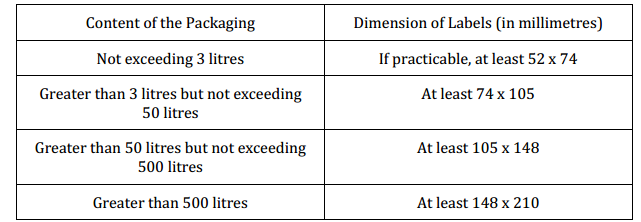Industry Code of Practice on Chemicals Classification and Hazard Communication (ICoP)
Little Pro on 2016-01-04
GHS has been introduced to Malaysia via CLASS Regulations issued in Oct 2013 and the Industry Code of Practice on Chemicals Classification and Hazard Communication(ICOP) issued on 16 April 2014. Industry has been given one year grace period to comply with CLASS Regulations and ICOP since ICOP was published.
ICOP is promulgated as a guidance to help the industry comply with CLASS Regulations. It sets out detailed requirements on chemical classifications, labelling and safety data sheets (SDS).
ICOP consists of four parts:
- Part I: List of Classified Chemicals
- Part II: Chemicals Classification
- Part III: Hazard Communication: Labelling and Safety Data Sheet
- Part IV: Confidential Business Information
ICOP can be downloaded here.
Classification & Building Blocks in ICOP
The Part I of ICOP contains a list of chemical substances that have been classified by DOSH. For hazardous substances on the list, companies must use the classifications given on the list.
For substances not on the list, companies shall use classification criteria given in Part II to classify their chemicals. The classification criteria are aligned with UN GHS Rev. 3. The following building blocks are not adopted by Malaysisa.
- Flammable Liquids Cate. 4;
- Acute Toxicity Cate. 5;
- Skin corrosion/irritation Cate. 3;
- Aspiration Cate. 2;
- Acute Aquatic Hazards Cate. 2 & 3;
Labelling
- Minimum font size: 7 points;
- Pictogram size: one fifteenth of the surface area of a label(minimum 10 mm x 10 mm);
- Small package (<=125 ml): hazard and precautionary statements can be omitted; plus a statement "read SDSs before use".
- Language: in both national language and English;
- Label size: depending on package volume(please refer to the table below).

Safety Data Sheets
- Format: standard 16-section SDSs;
- Language: in both national language and English language;
- Emergency telephone number: Both domestic and foreign 24h emergency telephone number are OK;
- Pictogram size in SDS: At least 1 cm x 1cm and less than 2 cm x 2 cm;
Confidential Business Info
Supplier may omit information on the name of a hazardous chemical or the composition and ingredients of a hazardous chemical if the information constitutes confidential business information.
If the substance name is omitted, such information shall be replaced with the generic names of the hazardous chemicals.
Where the exact concentration of an ingredient is CBI, the concentration of the ingredient shall be disclosed using the following allowable concentration range or a narrower range.

Where the classification of the hazardous chemical is based on the ingredients, rather than the product as a whole, the classification must be based on the highest concentration provided in the SDS.
Reference & Resources
Click here to access all references and resources for Malaysia including the English translation of regulations, regulatory lists and useful links to the websites of competent authorities.
Having Questions?
We do not provide consultancy services. If you have questions or need any help, please contact our sponsor. You may also find an expert in CSP business directory below. If you are a consultant, you may get yourself listed in CSP business directory (free) or sponsor this page to leave your contact info on this page..

Tags: Topics - Malaysia, GHS Resource